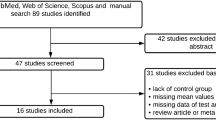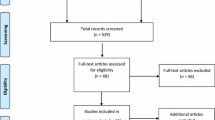Conclusions
The experiments reviewed here attempted to determine whether the kinetics of crossbridge cycling in intact myofibrils are directly affected by the level of activating calcium. In view of the conflicting evidence available to date, it is not yet possible to answer this question. Maximum shortening velocity, used as an index of crossbridge cycling kinetics, appears to depend directly on the concentration of activating calcium in some experiments, and to be independent of calcium in others. The differences between the experimental results appear to be genuine, and not an artifact of the experimental technique. Several criticisms of the techniques are discussed in detail to show that the error produced by any individual imperfection in technique would not be sufficient to account for the large differences in the results. It is possible that the effects of several such technical imperfections acted in consort to produce the large differences. If the large differences were the result of an accumulation of several small errors in both sets of experiments, so that the correct experimental result was a compromise, Julian's main conclusion would still be correct. That is, any genuine difference in the relative force-velocity curves, regardless of its magnitude, would indicate that calcium must have some effect on the actomyosin complex in addition to its effect on the regulatory proteins. A more likely explanation of the different results is that some physiological mechanism was operative in one set of experiments and not in the other. Two possible mechanisms, light chain phosphorylation and the influence of shortening on the cooperative binding of calcium to thin filaments, are discussed.
Similar content being viewed by others
References
ALLEN, D. G. & KURIHARA, S. (1982) The effect of muscle length on intracellular calcium transients in mammalian cardiac muscle.J. Physiol. 327, 79–94.
BÁRÁNY, K., BÁRÁNY, M., GILLIS, J. M. & KUSHMERICK, M. J. (1979) Phosphorylation-dephosphorylation of the 18 000-dalton light chain of myosin during the contraction-relaxation cycle of frog muscle.J. Biol. Chem. 254, 3617–23.
BREMEL, R. D. & WEBER, A. (1972) Cooperation within actin filament in vertebrate skeletal muscle.Nature New Biol. 238, 97–101.
BRENNER, B. (1980) Effect of free sarcoplasmic Ca2+ concentration on maximum unloaded shortening velocity: measurements on single glycerinated rabbit psoas muscle fibres.J. Musc. Res. Cell Motility 1, 409–28.
BRIDEN, K. L. & ALPERT, N. R. (1972) The effect of shortening on the time course of active state decay.J. Gen. Physiol. 60, 202–20.
CANNELL, M. B. (1982) Intracellular calcium during relaxation in frog single muscle fibers.J. Physiol. 326, 70P-71P.
CECCHI, G., COLOMO, F. & LOMBARDI, V. (1978) Force-velocity relation in normal and nitrate-treated frog single muscle fibers during rise of tension in an isometric tetanus.J. Physiol. 285, 257–73.
CECCHI, G., COLOMO, F. & LOMBARDI, V. (1981) Force-velocity relation in deuterium oxide-treated frog single muscle fibres during the rise of tension in an isometric tetanus.J. Physiol. 317, 207–21.
CROW, M. T. & KUSHMERICK, M. J. (1982) Phosphorylation of the myosin light chains in mouse fast-twitch muscle associated with reduced actomyosin turnover rate.Science 217, 835–37.
EBASHI, S. & ENDO, M. (1968) Calcium ion and muscle contraction. InProgress in Biophysics and Molecular Biology (edited by BUTLER, J. A. V. and NOBEL, D.), pp. 124–83. Oxford, New York: Pergamon Press.
EDMAN, K. A. P. (1979) The velocity of unloaded shortening and its relation to sarcomere length and isometric force in vertebrate muscle fibres.J. Physiol. 291, 143–59.
EDMAN, K. A. P. & KIESSLING, A. (1971) The time course of the active state in relation to sarcomere length and movement studied in single skeletal muscle fibers of the frog.Acta physiol. scand. 81, 182–96.
EDMAN, K. A. P., MULIERI, L. A. & SCUBON-MULIERI, B. (1976) Non-hyperbolic force-velocity relationship in single muscle fibers.Acta physiol. scand. 98, 143–56.
FORD, L. E. & FORMAN, R. (1974) Tetanized cardiac muscle.Ciba Found. Symp. 24, 137–50.
FORMAN, R., FORD, L. E. & SONNENBLICK, E. H. (1972) Effect of muscle length on the force-velocity relationship of tetanized cardiac muscle.Circ. Res. 31, 195–206.
GODT, R. E. (1974) Calcium-activated tension of skinned muscle fibers of the frog.J. gen. Physiol. 63, 722–39.
GORDON, A. M., HUXLEY, A. F. & JULIAN, F. J. (1966) The variation in isometric tension with sarcomere length in vertebrate muscle fibers.J. Physiol. 184, 170–92.
GULATI, J. & PODOLSKY, R. J. (1981) Isotonic contraction of skinned muscle fibers on a slow time base. Effects of ionic strength and calcium.J. gen. Physiol. 78, 233–57.
HELLAM, D. C. & PODOLSKY, R. J. (1969) Force measurements in skinned muscle fibres.J. Physiol. 200, 807–19.
HILL, A. V. (1938) The heat of shortening and the dynamic constants of muscle.Proc. Roy. Soc. 126, 136–95.
HUXLEY, A. F. (1957) Muscle structure and theories of contraction.Prog. Biophys. Biophys. Chem. 7, 255–318.
HUXLEY, A. F. & SIMMONS, R. M. (1973) Mechanical transients and the origin of muscular force.Cold Spring Harb. Symp. quant. Biol. 37, 669–80.
HUXLEY, H. E. (1972) Structural changes in the actin and myosin-containing filaments during contraction.Cold Spring Harb. Symp. quant. Biol. 37, 361–76.
JEWELL, B. R. & WILKIE, D. R. (1958) An analysis of the mechanical components in frog's striated muscle.J. Physiol. 143, 515–40.
JEWELL, B. R. & WILKIE, P. R. (1960) The mechanical properties of relaxing muscle.J. Physiol. 152, 30–47.
JULIAN, F. J. (1969) Some mechanical properties of chemically activated single vertebrate muscle fibers measured with the use of a servo control system.Abstr. 3rd Int. Biophys. Congress I.U.P.A.B.I.S. 7.
JULIAN, F. J. (1971) The effect of calcium on the force-velocity relation of briefly glycerinated frog muscle fibres.J. Physiol. 218, 117–45.
JULIAN, F. J. & MOSS, R. L. (1981) Effects of calcium and ionic strength on shortening velocity and tension development in frog skinned muscle fibres.J. Physiol. 311, 179–99.
KATZ, B. (1939) The relation between force and speed in muscular contraction.J. Physiol. 96, 45–64.
MCCLELLAN, G. B. & WINEGRAD, S. (1978) The regulation of calcium sensitivity of the contractile system in mammalian cardiac muscle.J. gen. Physiol. 72, 737–64.
MOSS, R. L. (1979) Sarcomere length-tension relations of frog skinned muscle fibres during calcium activation at short lengths.J. Physiol. 292, 177–92.
MOSS, R. L. (1982) The effect of calcium on the maximum velocity of shortening in skinned skeletal muscle fibres of the rabbit.J. Musc. Res. Cell Motility 3, 295–311.
PEMRICK, S. M. (1980) The phosphorylated L2 light chain of skeletal myosin is a modifier of the actomyosin ATPase.J. Biol. Chem. 255, 8836–41.
PERRIE, W. T., SMILLIE, L. B. & PERRY, S. V. (1973) A phosphorylated light chain component of myosin from skeletal muscle.Biochem. J. 135, 151–64.
PODOLSKY, R. J., NOLAN, A. C. & ZAVELER, S. A. (1969) Cross-bridge properties derived from muscle isotonic velocity transients.Proc. natn. Acad. Sci., U.S.A. 64, 504–11.
PODOLSKY, R. J. & TEICHHOLZ, L. E. (1970) The relation between calcium and contraction kinetics in skinned muscle fibres.J. Physiol. 211, 19–35.
SILLEN, L. G. & MARTELL, A. E. (1971)Stability Constants of Metal-ion Complexes. London: The Chemical Society.
TEICHHOLZ, L. E. & PODOLSKY, R. J. (1970) Force-velocity relations in skinned muscle fibers.Abstr. Biophys. Soc. FAM-G5.
THAMES, M. D., TEICHHOLZ, L. E. & PODOLSKY, R. J. (1974) Ionic strength and the contraction kinetics of skinned muscle fibers.J. gen. Physiol. 63, 509–30.
WEBER, A. (1966) Energized calcium transport and relaxing factors. InCurrent Topics in Bioenergetics, (edited by SANADI, D. R.), pp. 203–54. New York, London: Academic Press.
WISE, R. M., RONDINONE, J. F. & BRIGGS, F. N. (1971) Effect of calcium on force-velocity characteristics of glycerinated skeletal muscle.Am. J. Physiol. 221, 973–9.
Author information
Authors and Affiliations
Rights and permissions
About this article
Cite this article
Podolin, R.A., Ford, L.E. The influence of calcium on shortening velocity of skinned frog muscle cells. J Muscle Res Cell Motil 4, 263–282 (1983). https://doi.org/10.1007/BF00711996
Received:
Revised:
Issue Date:
DOI: https://doi.org/10.1007/BF00711996




